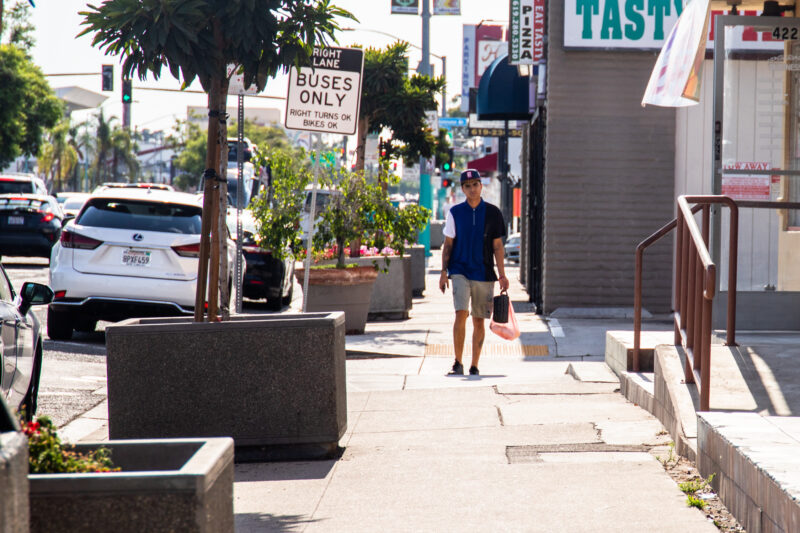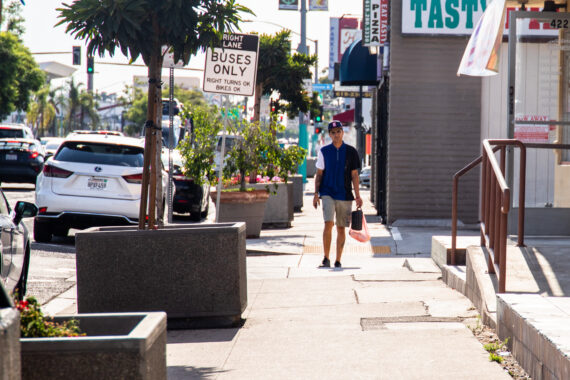
Leaders and advocates in San Diego’s Vietnamese community want to strengthen their voting power in this year’s redistricting process.
The Vietnamese community has grown significantly over the past decade, but it’s been split between at least four different City Council districts. Many in the community hope that the city’s Vietnamese population can be consolidated into one or two districts to give the community a stronger voice. At the center of the discussion is Linda Vista, home to one of the city’s larger Vietnamese populations, and which is currently split between two districts.
According to data from the San Diego Registrar of Voters detailing special language requests, there were 13,701 Vietnamese voters in the county in 2011. In 2021, that number more than doubled to 30,124. There are roughly 50,000 Vietnamese people in San Diego County – the majority in the city of San Diego, according to 2019 American Community Survey.
The major hubs in the city include parts of northern San Diego, like Mira Mesa and Rancho Peñasquitos, central San Diego, especially in Linda Vista and eastern San Diego, in City Heights and Oak Park. That means there are large chunks of the community in City Council Districts 4, 6, 7 and 9.
“I believe that when a community such as the Vietnamese community is being split in multiple City Council districts, the community will lose their voting power to advocate for their specific needs,” said Tram Lam, president of the Little Saigon Foundation of San Diego, in an e-mail. “More importantly, when a community’s voice gets diluted, they become second-class citizens and second-class community.”
That could result in a community losing out on financial support from the city and its businesses and residents getting lower quality of services, like public safety, social services and economic opportunities, Lam said.
“I believe having a strong Vietnamese voting bloc will not just [be] beneficial to the Vietnamese community, but this could bring greater benefits to the city of San Diego as a unique diversity and inclusive destination,” Lam said.
San Diego has one of the largest Vietnamese communities in the country. Many Vietnamese families in San Diego have roots in City Heights, where they or relatives came as refugees in the 1970s, and some have since moved to other communities, like Linda Vista or Mira Mesa.
“We have been divided into too many parts in the city, so it’s very hard for the Vietnamese community to get together and go out and get representation for the Vietnamese community,” said Peter Pham, president of the Vietnamese Federation of San Diego.
Pham lives in Rancho Peñasquitos, but as president of the Vietnamese Federation, which is based in Linda Vista, he often finds himself traveling throughout the city to assist and listen to community members. But sometimes it’s even hard for him to earn trust in those communities because he can’t be there all the time, he said.
Restructuring the City Council district map to concentrate more Vietnamese communities in a single district could help foster stronger leadership that the community trusts regardless of which neighborhood they live in, he said.
Joe Long, a former San Diego resident who is Vietnamese, submitted a comment to the city’s redistricting commission, advocating that the Vietnamese communities in Linda Vista and Clairemont be joined in one district.
The union of the communities would mean many Vietnamese temples and churches, language schools, grocery stores and other Vietnamese-owned businesses could be together in one district, advocating for their needs together, Long wrote.
“I would urge this commission to unify this Linda Vista area with adjacent areas with similar high concentration of Vietnamese population,” Long wrote.
Long lived in San Diego for 15 years and recently moved to Riverside County after both his children began attending college there, but he said he is still involved in the community.
The pandemic reinforced the need of a unified voice for the Vietnamese community, Long told me. Many Vietnamese-owned businesses, like restaurants, barbershops and nail salons, have been hurt during the pandemic both because of the closures and limitations imposed on businesses and a rise in anti-Asian sentiment.
Tim Nguyen, a past board chair of the Asian Pacific American Coalition and a Vietnamese American community advocate, said that in 2011, he advocated for Linda Vista to be included in District 6, which became the Asian-empowerment district in the last round of redistricting. The community not only has a large Vietnamese population, but also large Filipino, Hmong and Laotian populations. But that didn’t happen.
There is movement outside of the Vietnamese community to unite Linda Vista.
Noli Zosa, a resident of Linda Vista who ran to represent District 7 on the City Council last year, said he’s an advocate for Linda Vista – which is currently split between Districts 2 and 7 – to be reunited in one district. For Zosa, who is Filipino American, he would like to see Linda Vista in District 6 because of its many Asian residents and its socioeconomic diversity.
“I ran for City Council in District 7 and Linda Vista has so much more in common with Mira Mesa and Kearney Mesa than with Del Cerro and Tierrasanta. The issues are completely different,” Zosa said.
Howard Wayne, the interim chair of the Linda Vista Planning Group, also wrote to the city redistricting commission advocating for Linda Vista to be brought into one district.
Wayne said he hasn’t had issues with any of the Council members who have represented Linda Vista nor does he have a preference for which district Linda Vista ends up in, but he thinks the community will be able to influence its Council member more if it’s united.
“We are an extremely diverse community,” Wayne said. “We have all types of people living here, but we all share a common issue of housing affordability.”
The Vietnamese community is certainly split, Nguyen said, but he also thinks that increased Asian American and Pacific Islander representation that resulted from the creation of the Asian-empowerment district has helped the Vietnamese community.
Little Saigon, in City Heights, for example, has gotten more attention over the past decade, he said.
Lam and Pham said that it has been helpful to have Asian representation on the City Council, but the Asian community in San Diego includes many nationalities – and while they have some similar needs and values, they also differ.
For example, Lam said, the Vietnamese community has high levels of people with limited-English proficiency, particularly in the older generation. People who came as refugees from Vietnam may also be less inclined to trust the government because they came from a country where petty corruption was common, she said. Both of those shape the community’s politics and their relationship with local government, and not all Asian communities have those same experiences.
“Having a stronger Vietnamese voting block to advocate for culturally tailored supports is always [more] beneficial than a one-size-fits-all approach where not everyone fits the mold,” Lam said.

